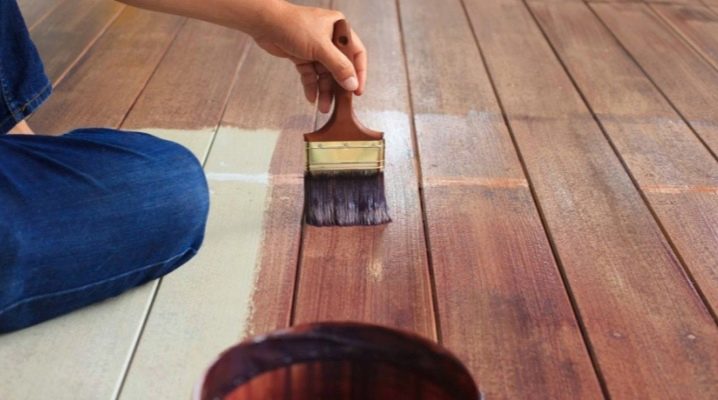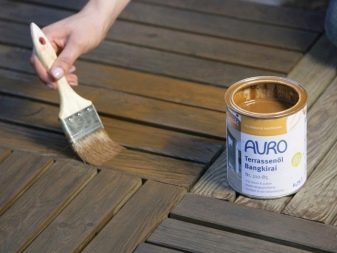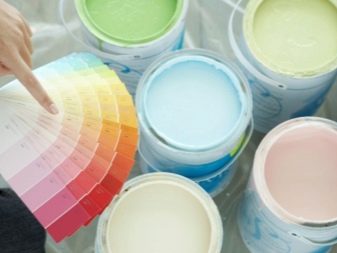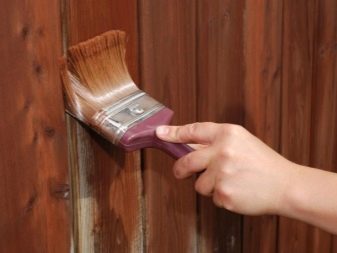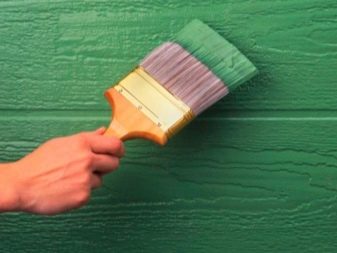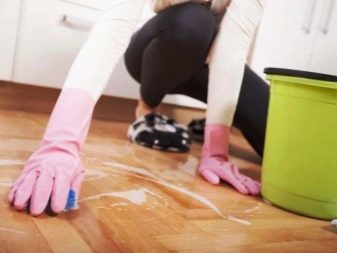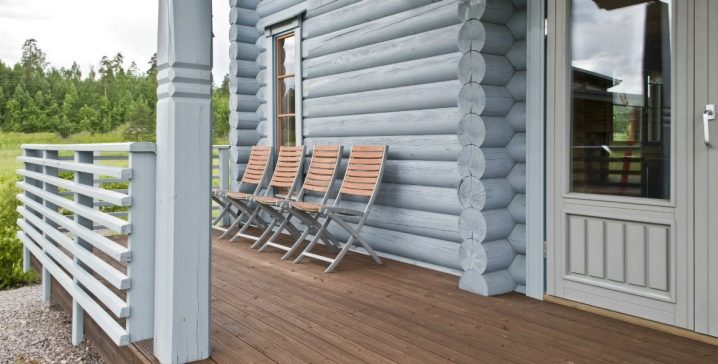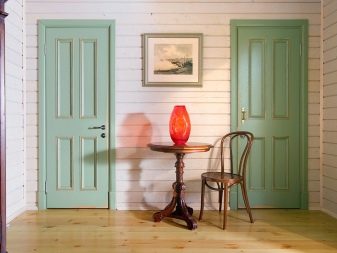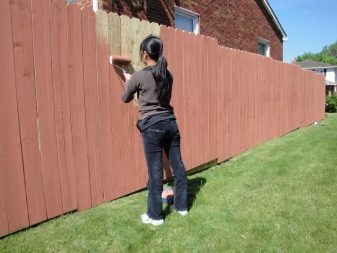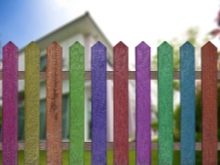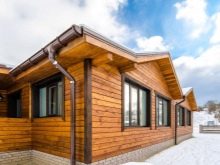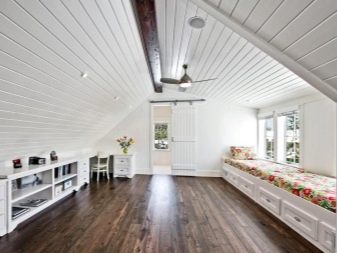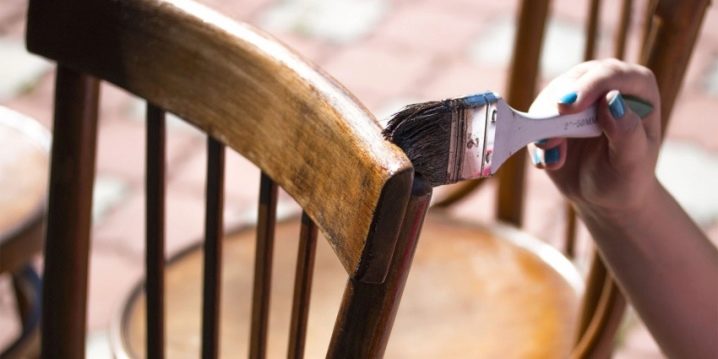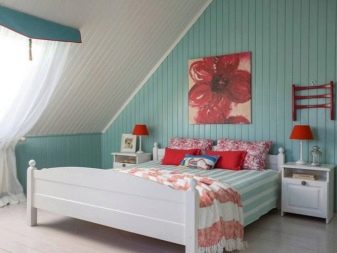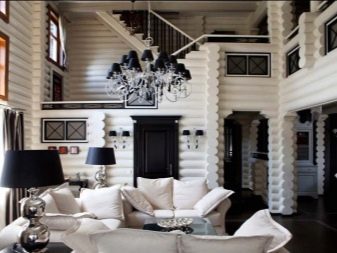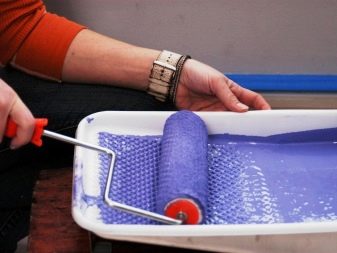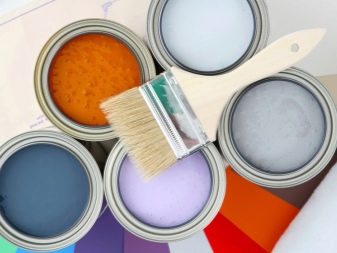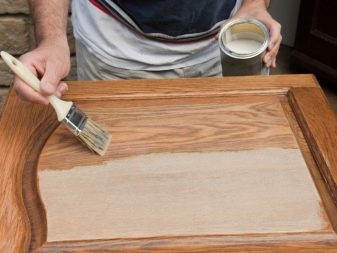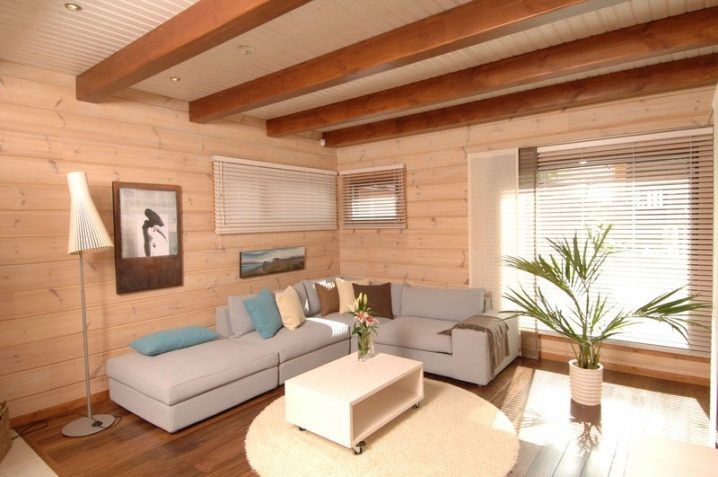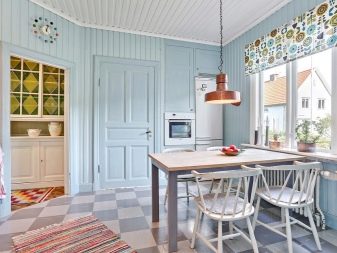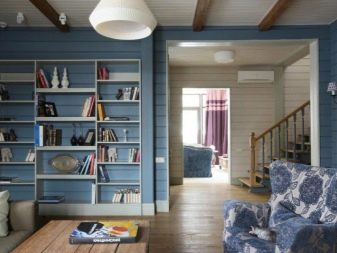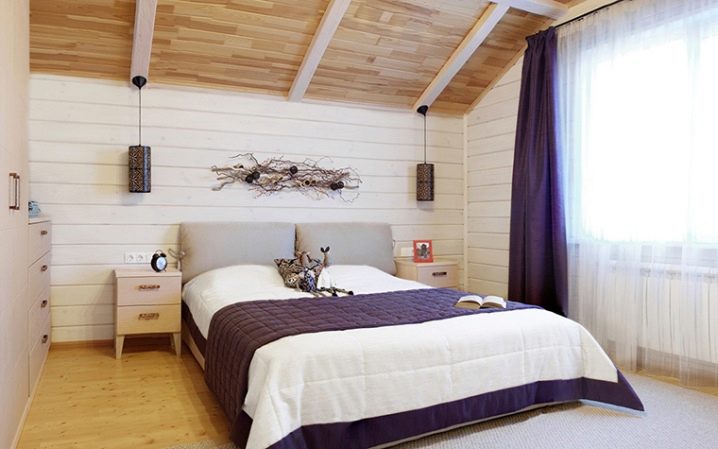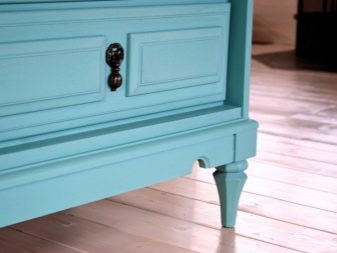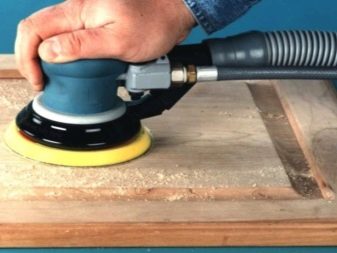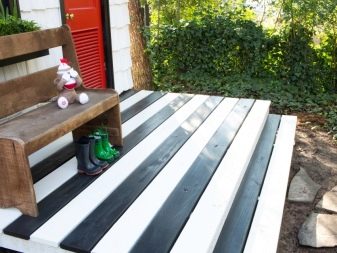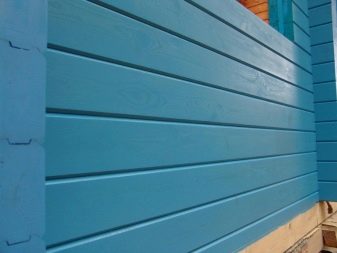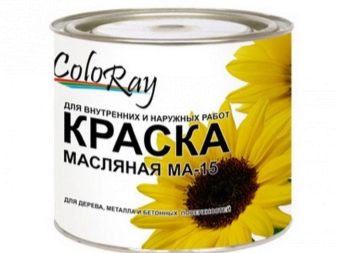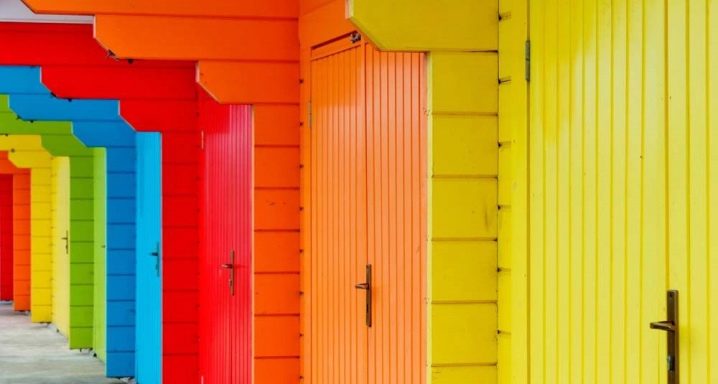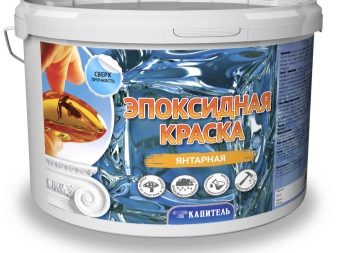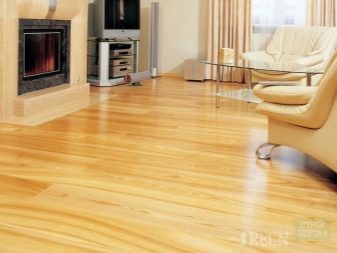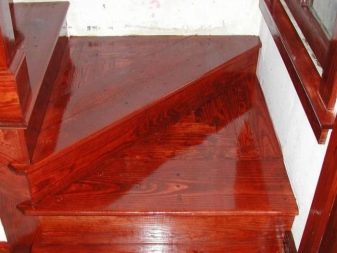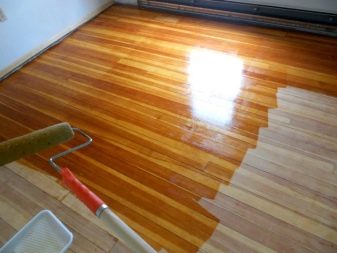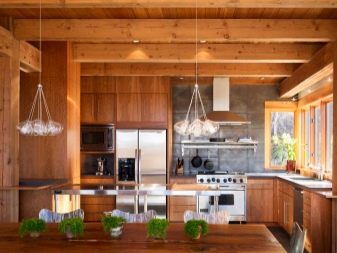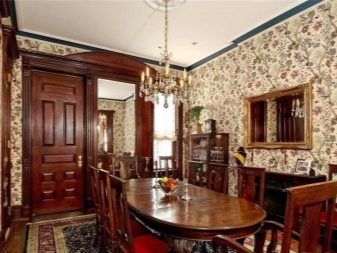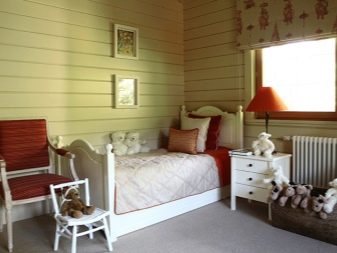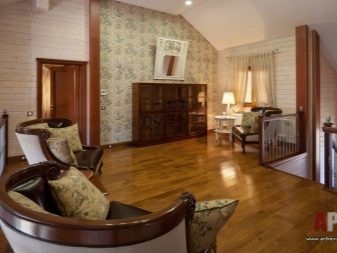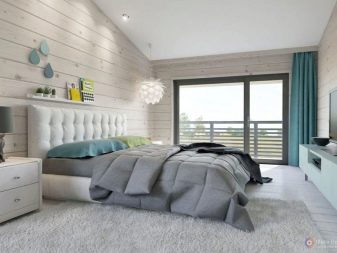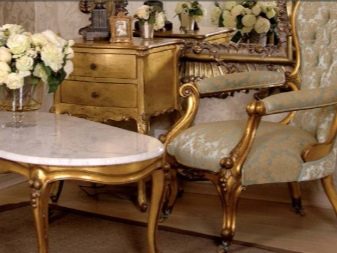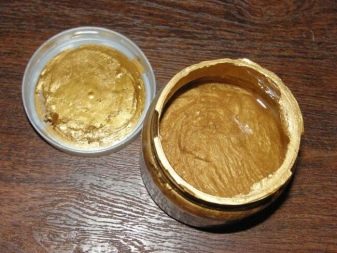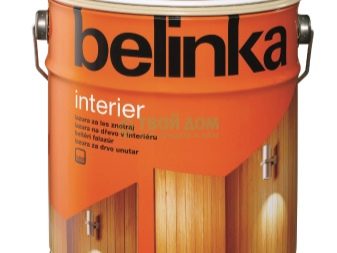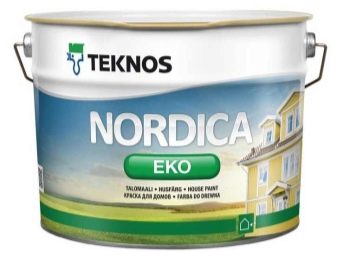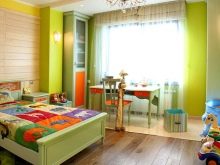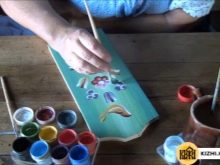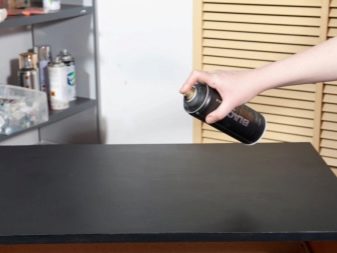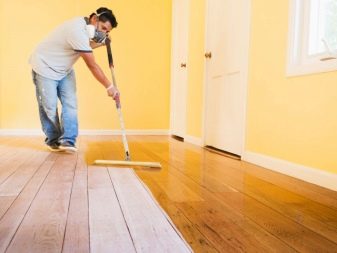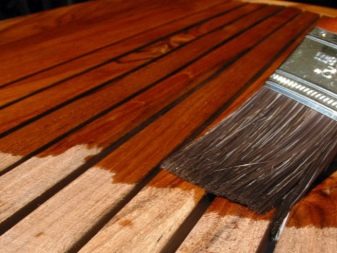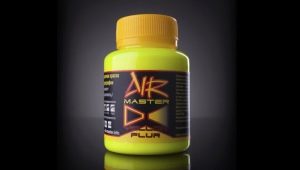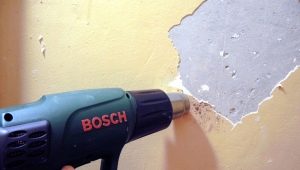How to choose paint for wood?
Recently, paint has been increasingly used to finish wooden surfaces. It is believed that many paints can protect the tree from various factors. But not always such coatings can be suitable for wooden textures. That is why it is important to know the advantages and disadvantages of all types of paints that are compatible with wooden surfaces, so that you can choose the right ones for finishing.
Special features
High quality wood paints usually include components such as:
- pigments;
- binding basis;
- filler;
- additional additives.
Each component performs certain functions. The pigment gives the paintwork a specific shade. The binding base is responsible for the texture of the paint and allows you to combine all the components of the composition to a smooth mass. In addition, it forms a surface film with protective properties.The filler is used so that the paint in the applied form remains durable and has a beautiful shine, which emphasizes the texture of the wood.
For the manufacture of paint using a lot of additives that allow you to extend the life of wooden surfaces:
- Antifoam performs the function of fire protection.
- Fungicides have a protective function, preventing the spread of fungus and harmful bacteria.
- Dryers allow the coating to dry quickly on the surface of the tree.
Thus, a paint that is correctly selected in composition improves many of the qualitative characteristics of wooden surfaces and reduces the likelihood of their wear and damage from external influences.
All coatings that are used for wood finishing, completely eco-friendly. They allow the material to maintain a good indoor climate.
The paint should be a durable coating, because as it is washed, it will not be able to cope with its decorative functions, and the wood will no longer be so reliably protected. It is important that such paint possesses moisture resistance. Many manufacturers represent models, the main function of which is to protect the tree from moisture.
A feature of some types of paint for wood is that the manufacturer includes in its composition of natural ingredients. This is due to the fact that the tree itself is completely natural and environmentally friendly, therefore, paints for this raw material usually contain components based on animal wax and vegetable resins. Such paints are not represented in a wide variety of shades, but they perfectly preserve the environmental friendliness of wood.
Special features
The paint also performs other important and necessary functions for wooden surfaces:
- Wood paints are usually resistant to mechanical damage. They protect the tree from impacts with hard objects and other impacts.
- Most of the compositions intended for the tree, differs hiding. They penetrate the wood texture well and fill even small gaps. Coatings are qualitatively distributed over the surface and do not leave gaps. They look beautiful and monolithic.
- Any paint for wood performs a decorative function. It is intended for filling monochromatic wooden surfaces with brightness and rich colors.
- An important feature of paints for wood is that they have a low cost. You can save on interior or exterior decoration, without using expensive paints and varnishes.
- Another feature of paint on wood is that it simplifies the maintenance of wooden surfaces. You can constantly wash the floors and do the usual cleaning, not worrying that the fine dirt is clogged in wood texture. In addition, the color of the paint does not change with time. You can not worry that wooden walls and other elements will deteriorate due to wet cleaning.
Application areas
Wood paint can be used for both indoor and outdoor use. Moreover, this way you can not only protect the tree, but also make it brighter and more interesting. You can use any options for painting and design changes.
Paints have a number of features that distinguish their purpose:
- Models for exterior trim allow to transform facades, fences, wall surfaces, doors, benches, steps, stairs and other wooden elements. They have a good soaking ability.
- Many models designed for exterior woodwork are frost resistant.They reliably protect the tree from freezing and retain their appearance for many years, regardless of the number of defrost and freeze cycles.
- Models for interior decoration often have not as strong smell as models for exterior decoration. Odorless paints are often used to paint wood in the interior. They are more expensive, but more functional.
- Models for exterior finish are more resistant to natural factors. They do not fade in the sun, they do not care about exposure to direct sunlight.
- Also exterior paints more reliably protect the tree from moisture and other natural factors, including precipitation of any kind.
- But usually interior paints dry faster than exterior paints, which is a feature of such wood-based compounds.
Manufacturers are trying to combine all these important features in one particular composition, so that the paint fits well on the tree, and the coating as a whole looks presentable. But still many formulations differ depending on their purpose and some quality characteristics.
Kinds
Water emulsion paint
Compositions based on an aqueous emulsion have a more liquid consistency than other species. It is this quality characteristic that allows the lacquer composition to infiltrate the texture of wood deeper and faster and create a quality coating without gaps. Aqueous emulsion paint for wood after drying forms a protective film that protects the tree from many factors. Water-based paints usually include:
- water;
- color pigments;
- binding film formers;
- fillers that are responsible for drying speed and moisture resistance;
- organic solvent.
All these components combine well with each other and create a reliable and high-quality woodgrain coating. The emulsion formulations usually dry for about 4 hours, but there are more quick-drying types of such paint. It all depends on what kind of filler manufacturer additionally added to its composition.
Latex paints
Some water-based paints have latex in their composition. Such compounds are almost odorless, and therefore they are excellent for interior woodwork.Latex water-based paint has a pasty appearance, so when used it is diluted with water.
Latex compounds have good moisture resistance and are completely non-toxic. They dry on average a couple of hours, speeding up the finishing process. Latex paints have an important advantage - due to their plastic texture, they are able to fill even small cracks and texture elements of the wood surface, providing the highest quality coloring.
Latex water-based paints have the quality of vapor permeability. It is thanks to him that wood receives additional protection from the development and spread of the fungus.
But latex paints have some downsides:
- This coating quickly loses its color when exposed to direct sunlight. That is why it is not customary to use it for exterior decoration. If the room has a lot of windows with bright light, and they are facing the south side, then it is advisable not to use such paints. In addition, over time, the coating can quickly lose its original color and begins to turn yellow.
- This paint when working on wood requires the use of special tools. Brush for such a paint and varnish composition is not suitable. That is why it is necessary for him to purchase a spray gun and a paint roller and use them in combination.
Thus, latex emulsion compositions are well suited for interior decoration on wood and perfectly protect the surface from moisture. But to paint the facades, window frames and doors, the paint is completely irrelevant.
Polyvinyl acetate paints
Aqueous emulsion paints can contain polyvinyl acetate. It performs the function of a binding element in this coating. Emulsions for PVA are the lowest cost among all water-based paints. They are perfectly combined with wooden textures. At the same time they dry no more than 2 hours.
Externally, they also differ from other water-based compositions. Thanks to their special components, they form not a glossy, but a semi-gloss film. They even allow to preserve the texture of wood, but very small pores remain on the surface.
Water-based paints of this type meet the requirements of fire safety and reduce the risk of fire.They do not incorporate ingredients harmful to human health and do not emit an unpleasant smell when painting. They are quite easy to apply, due to the high plasticity of the mixture. In addition, they have good adhesion on wooden surfaces. They protect wooden surfaces from alkalis.
Emulsion paints on PVA, unlike latex compounds, do not fade and are more durable. But they are susceptible to water. With frequent wet cleaning composition quickly washed off. In addition, the coating can quickly become dirty and deteriorate, since there is no protection against mechanical effects.
The emulsion on PVA does not allow the tree to breathe, which is bad for the room microclimate. Thus, it is better not to use it for finishing street constructions. For such compositions perfect warm rooms with good ventilation, premises for household purposes or buildings for storage.
All types of emulsion formulations have a big advantage - a small amount of paint on the wood. This is due to the quality hiding. For a good coating, usually no more than two coats of paint are required.So, for one square meter usually no more than 200 ml of a given composition is consumed. For more porous wood species, consumption may slightly increase, but it will still be lower compared to other types of compositions.
In addition, water-based paints are presented in a wide variety of shades; you can choose coatings for almost every taste. Some water-based formulations include additives in the form of silicates, alkyds, silicone. Basically, water emulsions perform the function of interior paints and are excellent for interior decoration of residential premises.
Water dispersion
These compounds are considered completely natural and environmentally friendly. This is a great solution for those who are concerned about the safety of finishing materials. Water-dispersion paints are composed of water, pigments, base and harmless filler. In the composition there are no solvents. As a rule, paint is sold in the form of a pasty substance, and therefore it must be diluted with water.
Such compositions are usually presented in light shades, and the quality of the paint depends on the tone of the solution. That is why it is necessary to additionally acquire color to make the paint more bright. So you can create a better composition.
The composition of water-dispersion paints for wood also include latex, PVA and other components. But in general, the coating remains high quality and environmentally friendly. As a rule, water-dispersion paint applied to wood will dry for no more than 2 hours.
Water dispersion paint is durable. Many manufacturers claim that these compounds are able to serve up to 15 years. They protect the wood from mechanical damage and abrasion. In addition, the aqueous dispersion has a high adhesion. This coating makes it possible to paint well any, even the most porous wood.
Water dispersion does not have a pronounced odor and is therefore excellent for interior decoration. When dried, no harmful substances are released into the air. The coating only evaporates the water. The paint does not affect the indoor climate and allows the tree to breathe, while maintaining its environmental friendliness. The most important quality is water resistance, therefore, the field of application of this composition is diverse.
Acrylic Compounds
This material is often used for painting wooden surfaces. It is widely used in this area due to its good value for money.and quality characteristics. It protects the tree from ignition if a spark hits it.
When dry, a dense film forms on the surface, protecting the tree from many factors. The material provides good air circulation, prevents rotting wood. In addition, it does not spread the fungus and protects the tree from moisture. Acrylic paints are completely hypoallergenic and safe. In addition, in combination with wood, acrylic has good adhesion.
It extends the life of wooden surfaces and increases their resistance to abrasion. Wood, painted with acrylic paints, much easier to wash. It is absolutely not afraid of wet cleaning and many household chemicals. In the process of applying the paint does not emit an unpleasant smell and dries in less than 2 hours. There are even acrylic paints that dry in 30 minutes.
For the application of acrylic compositions, you can use almost any tools: both a roller and a brush. They can be applied even with the help of an airbrush.
Acrylic compositions for wood are distinguished by the fact that they have more interesting decorative characteristics, compared to other types of paints suitable for this material. They allow you to make the surface matte, semi-matte or glossy.In addition, manufacturers are models of paints that can replace any varnishes. There are also acrylic paints with glitter, mother of pearl and some other decorative elements.
Acrylic compounds are also resistant to temperature extremes. Therefore, they are suitable for both exterior and interior decoration. But acrylic paint on the tree is not so easy. When the distribution of the composition of the tree, on the surface may form some roughness.
That is why to obtain smooth coatings, it is necessary to carry out a thorough polishing of the surface before painting and apply paint in several layers, sanding each subsequent one.
Oil and alkyd dyes
These compounds are made from oils or synthetic substances. In general, their composition differs only in these two components. The first option is of natural origin, and the second is artificial. A binding element of these compositions is the linseed oil. Manufacturers do not allow tinting of these materials, although their choice in color and design is limited.
Alkyd and oil formulations have high quality grip. In addition, it is a good water-repellent paint.
But wooden walls and other surfaces painted with these compounds are not breathing. This can cause mold, especially if the room has a high level of humidity. Both oil and alkyd compounds do not have sufficient elasticity; therefore, they can crack afterwards due to tree shrinkage.
That is why they are not used as the main finishing material, but only for accent decorative decoration or for covering walls in industrial premises.
Drying oil, which is part of these paints, although it protects the paint from spreading, but over time affects its color. Paints begin to turn yellow and dim. These compounds dry for about two days, so they rarely paint and residential premises. In addition, these types have a sharp smell.
Oil and alkyd paints are most often used for wood floors in non-residential areas. They are also used for painting wooden arbors, fences, attic structures, shops and wooden tables for the street.
Epoxy paint
This is a two-component interior paint, which has in its composition epoxy resins.It is ideal for even the most difficult operating conditions. It is often used for exterior wood surfaces. It resists any mechanical, weather and even chemical effects. These models of paint are most often used for finishing the floor.
They allow wood floors to last much longer than other surfaces.. This composition is characterized by versatility and reliability. It is resistant to high temperatures and frost, does not deteriorate from exposure to moisture.
Lucky
Such compounds are now often used to cover wood. With their help, you can save the wood texture and improve the quality of the surface, make it smoother, safer and more durable.
As an alternative to varnishes, various impregnations, stains and other coatings are used, which make it possible to focus on the tree structure and to preserve the naturalness of this coating. In addition, they make it more resistant to external influences.
Lucky can be completely transparent or may have some kind of ebb. Decorative varnishes can preserve the naturalness of wood, but at the same time slightly change its shade, darkening or, on the contrary, lightening the material.With their help, you can make the effect of the fact that the surface is covered with wax, or create a bright glossy shine. In this way, not only walls and ceilings are made, but also floors and even furniture. Lucky allow you to maximize the beauty of wooden textures.
Design and colors
For painting wood, you can use bright colors or transparent natural coatings. If you have textured and high-quality wood, for example, wenge or oak, then you should not paint them with color coatings. It is better to purchase transparent compositions for antique decor. They will make wooden textures more luxurious and natural. This is a great solution for interior design in the style of eco, Provence, classic.
For the decoration of children's rooms, it is better to use quieter shades, choosing a pink, blue, light green or yellow coating. If the child is more mature, then it is possible to get brighter types of paints. Black and white paint is perfect for creating interesting contrasting designs. This combination can be used for painting or for contrasting stripes or other geometric lines.
The interior looks beautiful gloss gold paint or matte silver. All types of coatings are suitable for different types of interior.Silver will perfectly fit into any modern types of decoration, for example, in the interior in the style of hi-tech, minimalism or techno. But the golden, brown, beige shades should be used for finishing more traditional interiors under the tree.
Looks exquisitely gold and patina. As a rule, to create such a combination, they acquire a special decorative paint that is able to imitate a copper plaque. This method of finishing is often used when painting wooden furniture.
Manufacturers
Customer reviews show that Belinka specialized wood paint has good quality. The manufacturer presents protective texture paintwork for wood and impregnation. Buyers write that these coatings protect any wooden surfaces from moisture and fungus. They also note the durability of coatings.
Many praise German and Finnish wood paints from the brand Teknos. The popularity is due to the antiseptic and moisture-protective properties of such paint, as well as the fact that the coating does not wash out for a long time and soaks the wood well.
Tips for choosing
Choosing paint for interior work, you need to use only high-quality and safe formulations. This is especially true of the design of rooms for children.In this case, you can buy only quick-drying, odorless paint. When purchasing decorative paints for wall decoration inside the house, try to choose compositions suitable for painting. On them drawing will fall much better and will look more interesting.
It is possible to paint on a tree covered with decorative paints anywhere. It can be both walls and furniture, including a table and chairs. To do this, it is better to use quick-drying water-based paints, but for painting it is better to use acrylic compositions.
It is advisable to choose for interior such paints that allow the tree to breathe. This is especially true of coatings designed for wall decoration.
To finish the floor there is no need to buy paint that increases the durability of wood. It is better if it will be the most reliable compounds that bring wet cleaning and mechanical impact. Spray paint is perfect for interior decoration. As a rule, these are rubber or other compositions in cans that allow you to create interesting transitions, for example, a gradient.
Rubber paint is perfect for creating matte textures.If you plan to paint large areas with such a composition, it is better to get a spray gun. It will allow to make wood coloring more uniform.
Together with the paint must purchase a wash. Thus, it is possible to make the coating more qualitative and uniform, to level its texture. If you want to emphasize the naturalness and environmental friendliness of the coating, it is better to use transparent paints and varnishes. Also perfectly suitable polyurethane paint to help age the wood. With their help, you can create an interesting vintage interior and even change the texture of a particular type of wood.
To learn how to paint wood walls, see the next video.
